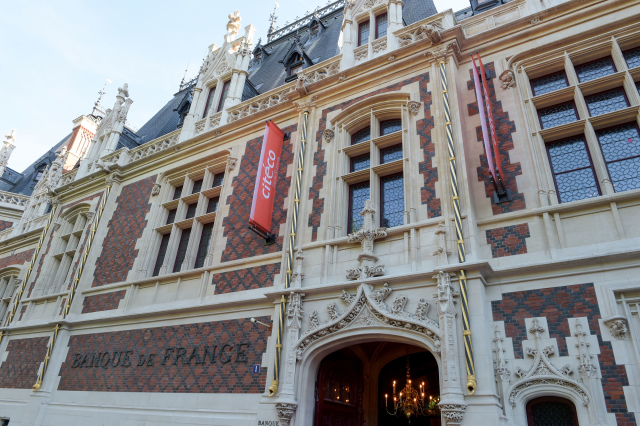
Do consumers make rational choices? It might not sound like the title of an art exhibit, but it’s one of the questions visitors can contemplate at France’s first museum aimed at revealing the arcane theories and systems underpinning the global economy.
But the Citeco, housed in a sumptuous neo-Renaissance palace built by a banker in the 19th century, also takes up a tougher challenge: reconcile the French with a subject often viewed with a mix of suspicion and contempt.
“The idea is for people to better understand and grasp the economy, that its general mechanisms be laid out in one place, because the level of comprehension is not what we would hope,” Philippe Gineste, the director, told AFP at the museum’s inauguration on Friday.
The launch has included an extensive advertising campaign — “Take control of the economy!” — and a revamped website urging people to “Dare the Citeco experience.”
It could be a tough sell, despite the 50 million euro ($56 million) renovation to show off the ornate marble and woodwork of the red-brick monument, formerly a branch of France’s central bank.
“I’m a bit skeptical about the project, for one thing it costs 12 euros to get in,” said Emmanuel Feutry, 64, who came from his home in Seine-Saint-Denis outside Paris — one of the poorest departments in France.
He didn’t have to pay though during the free opening weekend, and said he came mainly to admire the architecture.
“But the exhibits are well done,” he said while browsing the vault, which is still surrounded by the narrow moat built into the heart of the building.
The museum is banking on 130,000 visitors a year, including some 30,000 students as young as seven or eight.
Hands-on economic theory
The project was conceived after a visit by the former Bank of France governor Christian Noyer to the MIDE interactive economics museum in Mexico City, which opened in 2006.
Many of the exhibits are hands-on, including a contest where players compete to get to the beach fastest by figuring out how to make or trade for the sunglasses, hats and other things they’ll need.
Another one invites users to calculate the ideal age for retirement, all while spelling out the risks to pay-as-you-go pension systems.
Visitors can also sit down to a negotiating table and try to hammer out a global accord on cutting carbon emissions: “Find middle ground between common objectives and your national interests.”
“When you do things, you retain the information better,” Gineste said. “The idea is to have people do things, touch and handle them, so they can interact completely with the content.”
Despite the effort to avoid lecturing, however, subjects like hyperinflation or financial crises don’t always lend themselves easily to fun and games.
“The Pros and Cons of International Trade”, for instance, lets visitors watch video lessons given by their choice of two French economists — it’s a safe bet most grade-school students won’t find it riveting.
They’re likely to be more transfixed by the multicoloured lighting show projected in the mansion’s elaborate washroom than the nearby accounting exhibit and its collection of ledgers.
‘Not taking sides’
Visitors can also touch a gold bar or try their hand at making their own paper money, or admire a buffalo sculpture by the French scrap metal “alchemist” Christian Champin.
“There are plenty of things to look at, read and think about. Overall we offer around 12 hours of content, but the idea is that visitors just pick and choose what interests them the most,” said the museum’s curator Xavier Limagne.
And even if people don’t leave with expert knowledge of the concepts of scarcity or utility, maybe they will have a better understanding of their own spending or the current trade battles by the US with Europe and China.
“The French are known for not having much of an economic culture. And in a highly financial economy, not having these fundamentals is a handicap,” said Catherine Lubochinsky, an economics professor in Paris who advises the museum.
But museum officials say they don’t want the exhibits to be dogmatic or promote any particular school of economic thought.
“We’re not taking sides,” Limagne said.
“The goal is not to come down in favor of neoliberal economists, or in favor of those on the far left. It’s for visitors to be able to form their own opinions.” CC
RELATED STORIES:
‘Angry glances in the street’: How Paris met Pei’s Louvre pyramid


